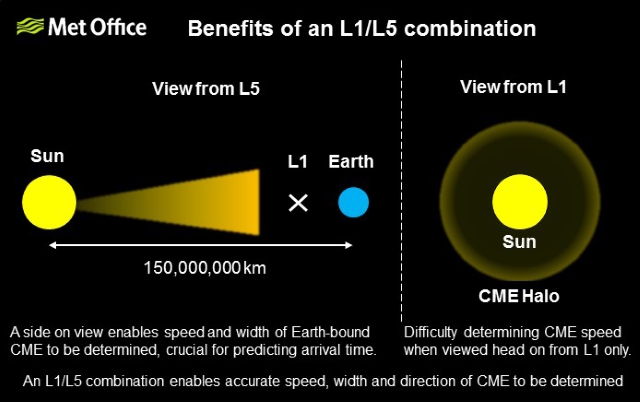The European Space Agency (ESA) today confirmed the contractors for the long-awaited Vigil mission which will transform global space weather forecasting.
The confirmation of the building of the satellite is the next step in the process positioning a satellite with a side-on view of the Sun to provide enhanced space weather forecasting.

The Met Office Space Weather Operations Centre, now celebrating its tenth year in operation, is one of a number of centres that will benefit from the new satellite.
The Vigil mission, as it’s known among space weather scientists, will enhance space weather forecasting capabilities and help provide more notice for potentially impactful space weather events such as coronal mass ejections.
Mark Gibbs, who leads the Met Office Space Weather Operations Centre (MOSWOC), said: “The Vigil mission represents a step-change in space weather forecasting capability. As well as replacing aging satellites, this mission will help to improve our forecasting capability and deepen our scientific understanding of coronal mass ejections (CMEs) that generate geomagnetic storms.”
Confirmation of the contract for the mission, which is being managed by the European Space Agency, represents the next milestone in the process of launching the new satellite by the end of this decade and will revolutionise imagery and data available to space weather forecasts.
Mark continued: “A side-on view of the Sun-Earth line is critical to provide accurate predictions of CME arrival at Earth. We’ll get access to more reliable, more advanced data to initialise models to predict CME arrival and also to monitor their progress as they head towards the Earth. We’ll be continuing to work with ESA to help ensure there’s as much benefit as possible to not just us at MOSWOC, but also to forecasting centres around the world. The Vigil mission will work in tandem with the current and future US missions stationed at L1.”
The news comes after geomagnetic storms two weeks ago brought aurora visibility to much of the UK in what was the strongest event since 2003 to impact Earth. While auroras provide immaculate photos, impactful space weather has the potential to affect everyone and is recognised on the UK’s National Risk Register. The ability to forecast these events can help to mitigate the worst impacts.

Find out more about the contract announcement.
Find out more about the Met Office Space Weather Operations Centre.

You must be logged in to post a comment.